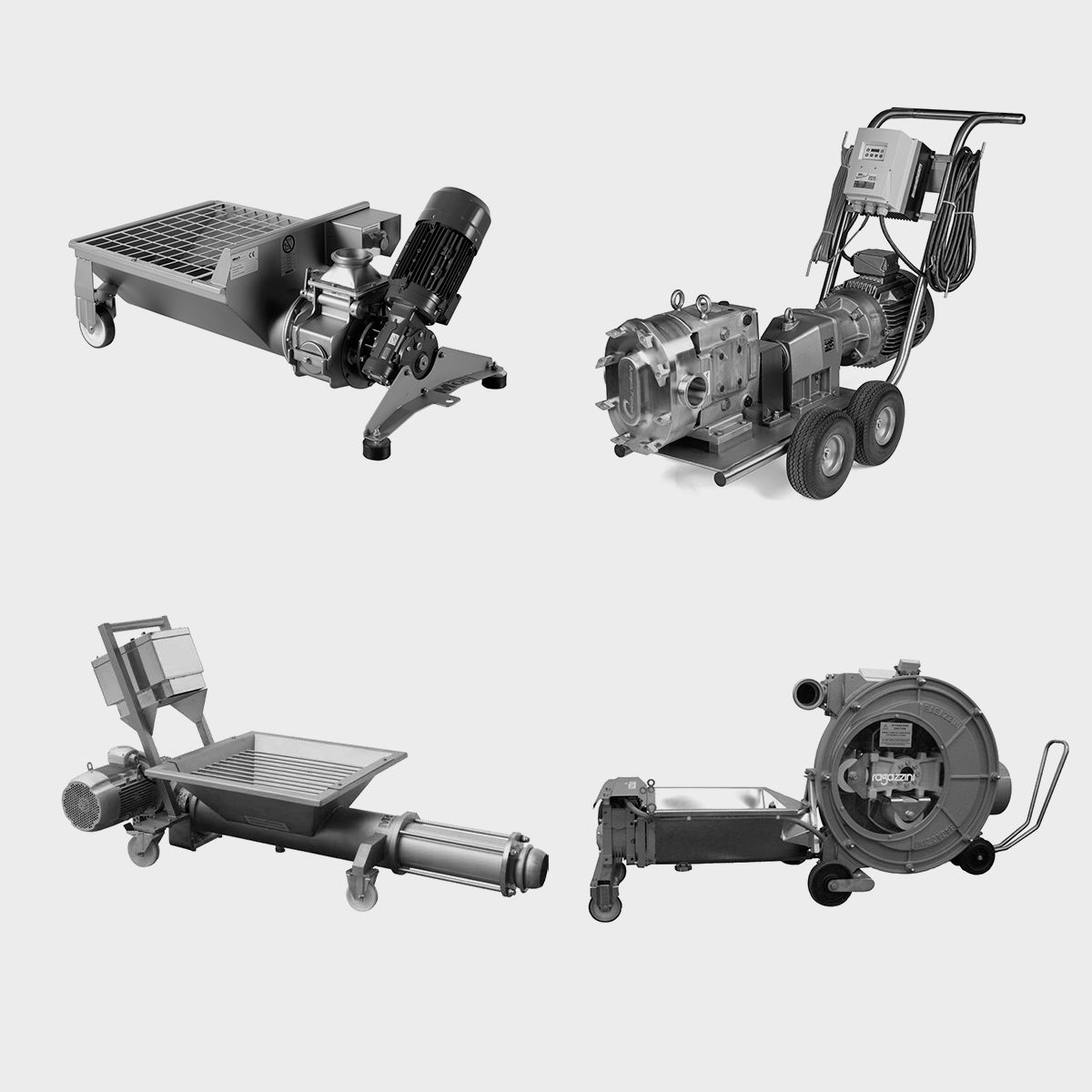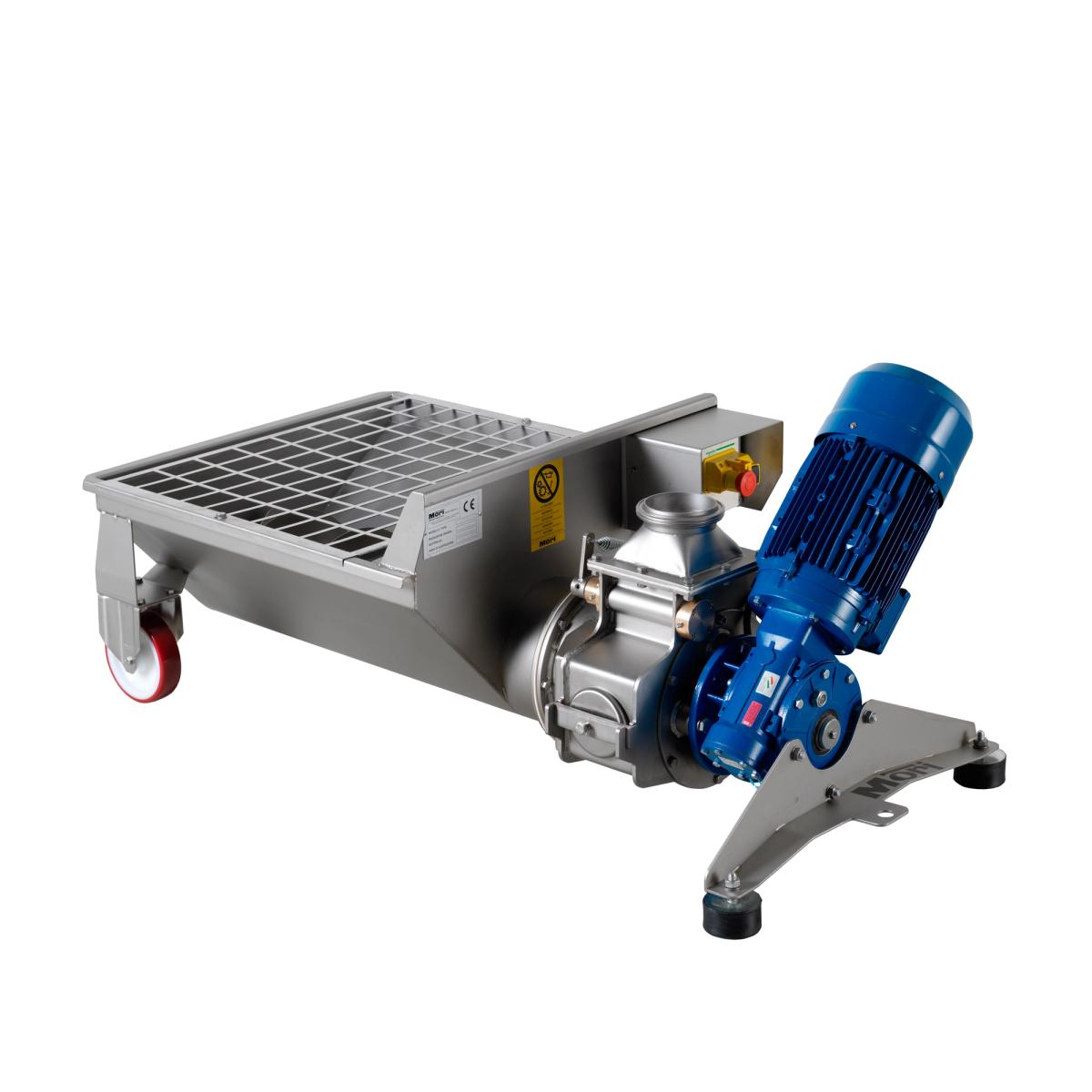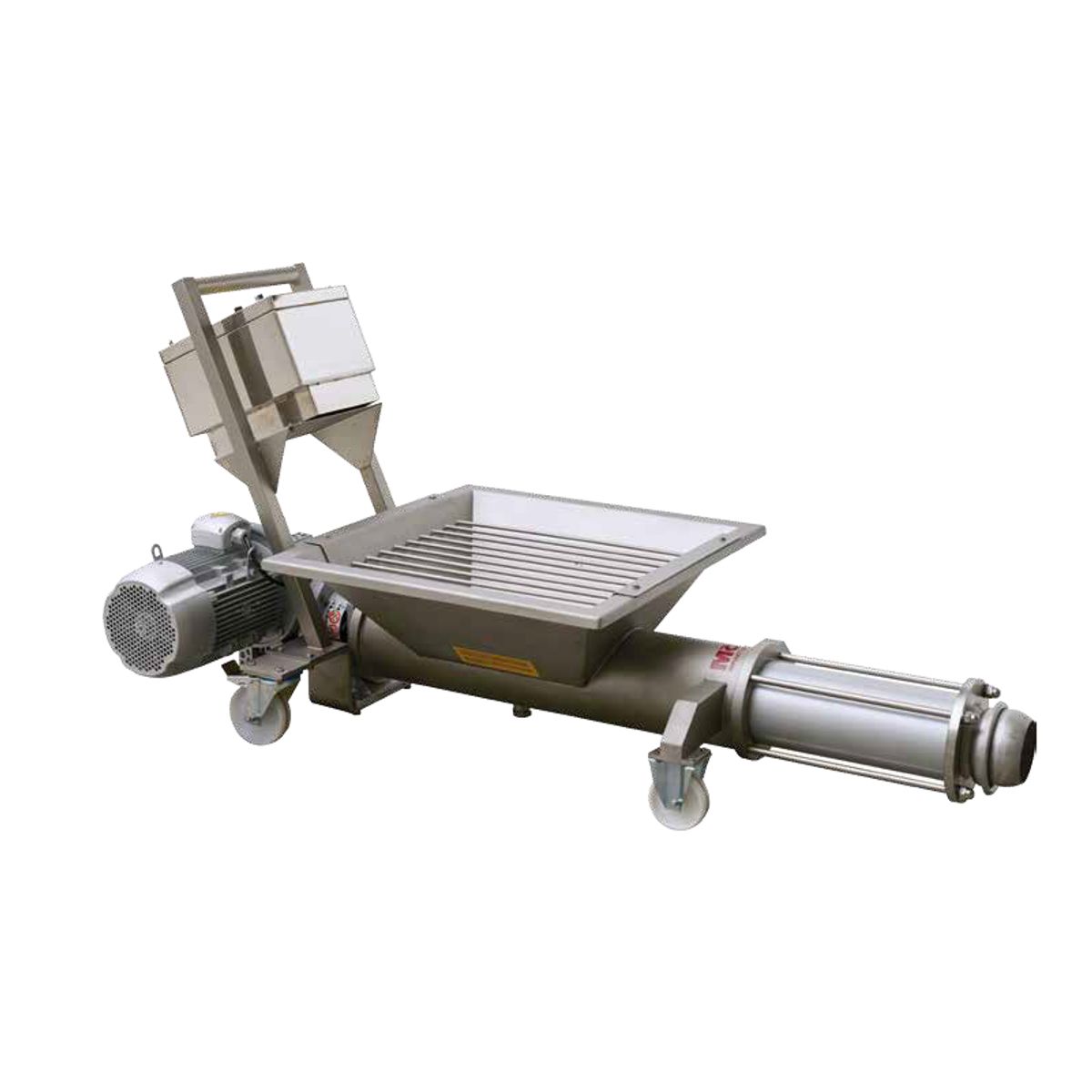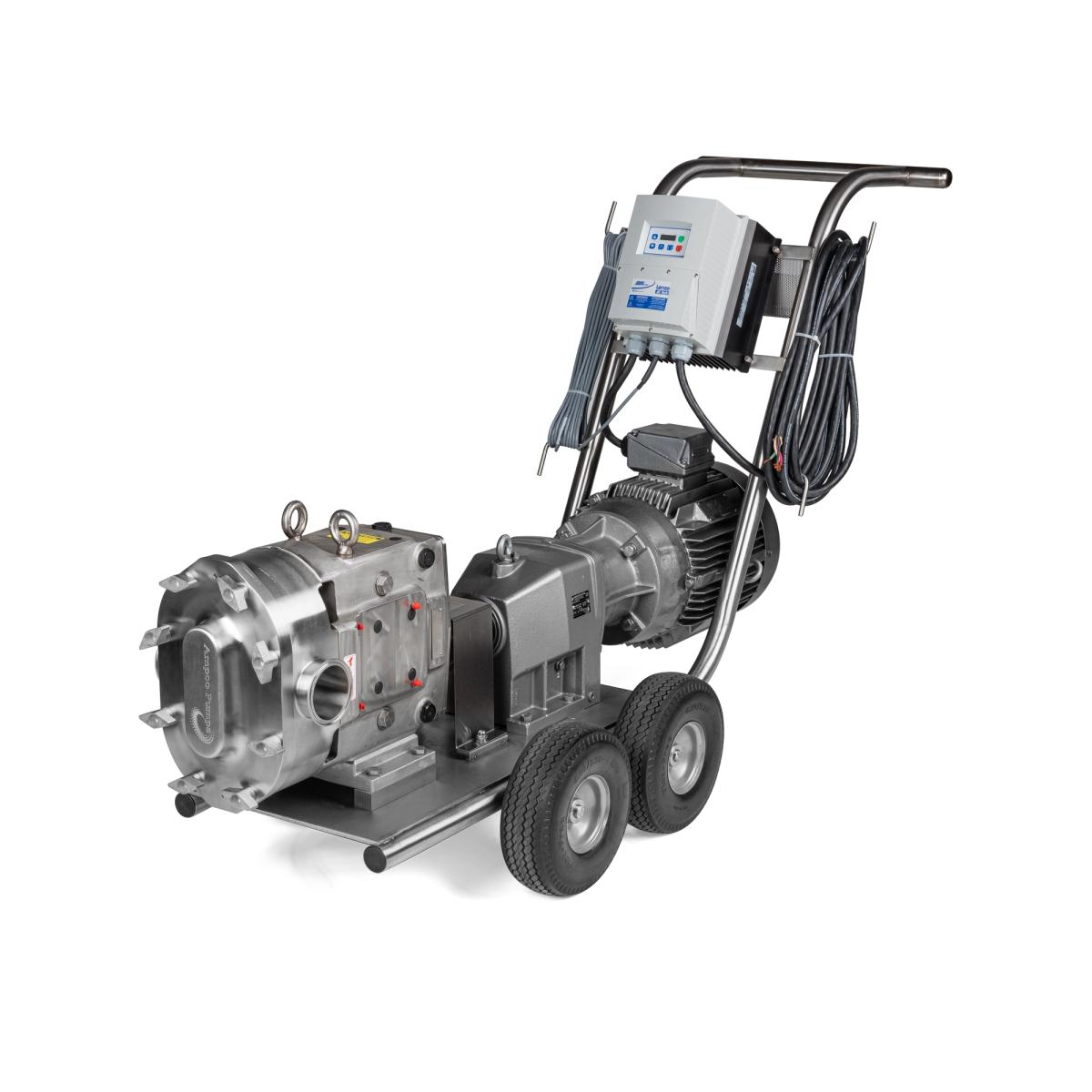
The Best Must Pumps for Wineries
A must pump is, well, a must for wineries hoping to move any kind of volume of grapes. If you're moving grapes with bins alone (or, heaven forbid, buckets & shovels) you might not realize just how much simpler a good must pump can make things. Let's take a look at what's out there and what we recommend. Although this article is focused on must pumps, what we say here can apply to nearly any semi-solid like beer/whiskey mash, etc.
Care & Feeding of Must Pumps
First things first: I often hear people looking for a must pump that is powerful enough to suck must directly out of a bin of grapes with a hose. Sadly, they are hunting for a unicorn. While we offer pumps that can pull a nearly perfect vacuum, you will be disappointed if you just stick a hose into a bin hoping to Hoover up all the grape must. It's more likely that the pump will suck up all the liquid and leave the solids behind. Must pumps need to be "fed" solids in order to work properly.
You typically feed a must pump with an auger-screw hopper that pushes the solids directly to the inlet of the pump where they can be sucked in and pushed forward. Some folks tell us they've had luck with sloped-bottom tanks that have a 3" or larger drain port. If the must is wet enough, some will drain through the port and into the must pump. Relying on this may be a bit dicey; particularly if you have a pump that can't run dry. Certainly a hopper is a more surefire solution.
So, bottom line: You gotta have a hopper if you want to move must. With that out of the way, let's look at some of the options.
Economy Must Pumps
The least expensive must pumps tend to be ones that are single-purpose. They're for must transfer only, and the rest of the year they're in storage.
Volumetric Lobe Pumps
If you're looking for maximum must movement with minimal money spent, your best bet will be an elliptical lobe pumps like Mori's V-Series pumps. Their built-in hopper is designed to fit right underneath your destemmer/crusher's outlet and move the grapes on down the line. They're not the highest-powered pump in terms of how far they can push, but they're gentle and effective. They are certainly the most economical dedicated must pump on offer.

Example Lobe Pumps for Must: Mori V-Series Volumetric Must Pumps
Mid-Range Must Pumps
Mono Screw Pumps
In the mid-range you'll find pumps that are more versatile, powerful, and/or gentle. The most common mid-range must pump we see in wineries is known by several names: Mono Pump, Moyno/Moineau Pump, Screw Pump, Progressive Cavity Pump. Whatever you call it, it is typically used as a dedicated must pump, and in storage the rest of the year. Berries and juice fall into the hopper where an auger screw pushes them forward into a cavity with a rotating screw. It's difficult to explain, but Wikipedia does a fine job and has some mesmerizing animations to boot.
Mono screw pumps are also quite gentle and do a good job of pumping long distances. Their only downside is that they cannot run dry without damaging the pump. Once damaged, the stator (the part that needs replacing) is expensive and difficult to replace. The Mori Mono Screw Pumps we offer feature dry-run sensing that will automatically stop the pump if it detects that it is running dry.

Example Mono Screw Must Pump: Mori PMT Mono Pump
Flexible Impeller Pumps
The trusty old flexible impeller pump can even move must, but as mentioned above, it needs a hopper to feed product into the inlet. You'll need at least a 2.5 to 3-inch inlet, and again, you'll need a hopper feeding must into the pump's inlet.
Flexible impeller must pumps shine mainly in their simplicity of repair. The Jabsco SQN 130 head in particular can be broken down for impeller replacement without any tools.

Example Flexible Impeller Must Pump: Jabsco SQN 130
High End Must Pumps
RPD Must Pumps (Waukesha/Ampco)
Waukesha and Ampco RPD pumps make fine must pumps (again, when sized appropriately and when paired with a hopper). They are often the de facto choice for wineries, as they are also popular for general wine transfer and pumpovers.
Under normal conditions these pumps work great. However, we've heard from some customers that had their harvest operations come to a screeching halt, literally, from stray vineyard staples and ties finding their way into the pumps. These pump heads have extremely tight clearances internally, so if something as small as a vineyard staple manages to come in between those clearances it wreak havoc, and the head must be disassembled, usually not without some lasting damage to the interior.

Example RPD Must Pump: Ampco ZP1-130
Ragazzini Peristaltic Must Pumps
For real, large-scale must transfer, our feeling is there's nothing superior to peristaltic pumps. Since there is no rotation internal to the pump, there is no shear. Peristaltic pumps are the primary choice for must transfer in Europe and Australia, and their popularity is growing rapidly in the USA as winemakers begin to understand their benefits. You can read our guide to peristaltic pumps for more on how they work.
Aside from being the most gentle must pump, they are the most powerful. Peristaltic must pumps can move wine many hundreds of feet through rises, runs, elbows, etc., when sized appropriately. Additionally, the idea of stray vineyard ties is of no concern. Peristaltic pumps just push it through.
Our take is this: if it can't be done with a Ragazzini, it can't be done with any pump.

Example Peristaltic Must Pump: Ragazzini Rotho MS3T
Ragazzini Piston Pumps
Finally, piston pumps. Though widely seen in Europe, they are not so common here in the USA. We think that's a shame, because they are by far the longest-lived must pumps available. Ragazzini calls them the "Fifty-Year Pump", because with proper care, they will easily last, well, fifty years.
They're powerful, gentle, no shear pumps. Aside from their form factor, which is, admittedly, a bit awkward, we're not sure why they aren't more popular.
The Danger Zone (Bad Must Pumps)
There are a few types of pumps that—sadly—will never bear the moniker of "Must Pump". Here they are, and why they don't work.
Air Diaphragm Pumps
While it's technically feasible that a large enough air diaphragm pump could be used to move must, it would have to be a pretty darn large pump and an enormous air compressor powering it. By that time, your money would be better spent on one of the pumps above.
Centrifugal Pumps
Not gonna happen. Centrifugal pumps are not known for being gentle, and don't typically fare well with solids anyway, so this is an emphatic no.
Anything with smaller than a 2.5" Tri Clamp Inlet
As we've already noted, 2.5" tri clamp is about as small as you'll reasonably want to go for moving must. Anything smaller and you're much more likely to clog up, and potentially damage the pump.
- © 2024 TCW Equipment, LLC
- Phone: (707) 963-9681
- Monday–Friday, 8–5 pm PT